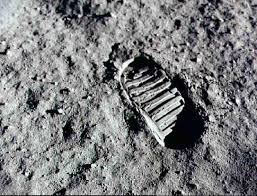
Professor Coch at Queens College always established a few rules during my undergraduate experience. First, he stated that you should never eat yellow snow. Second, when living on Long Island, always pick up after your dog. Lastly, never stare at a solar eclipse. I guess it sounds like the Christmas Story movie, "You'll burn your eyes out kid!" Anyway, there are two types of eclipses, 1) solar and 2) lunar. During my lifetime, I only had a few chances to observe partials or annular eclipses. An eclipse occurs when a large planet-like body passes into a shadow that is created by another planet-like body.
A solar eclipse is by far the most interesting. When this type of eclipse occurs, It can be 1 p.m. in the afternoon and it can be pitch black as though it is 1 a.m. There is an infrequent location where a solar eclipse can occur. This is because the moon smaller than Earth and therefore would cast a much smaller shadow, especially when the moon is farthest from Earth in its orbit (apogee). Check out this NASA photograph of a solar eclipse from outer space just above this paragraph. When all factors are conducive to produce a total eclipse, a portion of Earth will pass in the moon's shadow called the umbra. Careful observers can see the moon moving into the sun and block all incoming solar radiation from reaching us. Careful observers who are located in the less concentrated shadow (prenumbra), can see a partial solar eclipse. Check out this picture: solar eclipse.
A spectacular site to see is a lunar eclipse. The moon has a reddish-orange-brown appearance in comparison to its grayish-white color. This occurs when incoming solar radiation is (visible light) is absorbed and the remaining light red and orange is refracted as it reaches the moon. The occurence is very similar to the solar eclipse, except now the moon passes through Earth's larger shadow, especially when the moon is closest to Earth (perigee). The words umbra and penumbra are still used when discussing shadows from a planet-like body. Check out this picture: lunar eclipse.
Lunar Phases:
Solar: New Moon Phase
Lunar: Full Moon Phase
* See moon phases below
Eclipse Types:
Solar: Partial, Annular, Total
Lunar: Partial, Total
Schedules:
Solar
Lunar
Observing Solar Eclipse
Protection
Source: MrEclipse.com






No comments:
Post a Comment